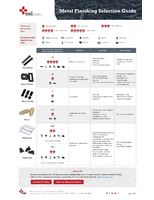EPA honors winners of 2013 Campus RainWorks Challenge.
Share:
Press Release Summary:
EPA announced winners of its second annual Campus RainWorks Challenge, a design challenge created to engage college and university students in reinventing water infrastructure and developing innovative green infrastructure systems to reduce stormwater pollution and build resilience to climate change. Winners include: University of Florida, Gainsville, FL; Kansas State University, Manhattan, KS; Michigan State University, East Lansing, MI; and Mississippi State University, Mississippi State, MS.
Original Press Release:
EPA Honors Winners of 2013 Campus RainWorks Challenge
University of Florida and Kansas State University lead in innovative design of green infrastructure on campus
WASHINGTON – The U.S. Environmental Protection Agency (EPA) today announced the four winners of its second annual Campus RainWorks Challenge, a design challenge created to engage college and university students in reinventing our water infrastructure and developing innovative green infrastructure systems to reduce stormwater pollution and build resilience to climate change.
Stormwater is one of the most widespread challenges to water quality in the nation. Large volumes of stormwater pollute our nation’s streams, rivers and lakes, posing a threat to human health and the environment and contributing to downstream flooding.
The Campus RainWorks Challenge engages students and faculty members at colleges and universities to apply green infrastructure principles and design, foster interdisciplinary collaboration, and increase the use of green infrastructure on campuses across the nation. This year, EPA introduced two design categories for the challenge—a master plan category, which examines how green infrastructure could be integrated into a broad area of a school’s campus, and a site design category, which examines how green infrastructure could be integrated into a particular site on the team’s campus. Teams of undergraduate and graduate students, working with a faculty advisor, developed innovative green infrastructure designs in both categories, showing how managing stormwater at its source can benefit the campus community and the environment.
The 2013 challenge winners are:
University of Florida, Gainsville, FL (1st Place, Master Plan Category) – The team’s design plan centers on a 67.6 acre subwatershed in the northeast corner of campus. To engage students with the journey of water, the three-phase plan would transform two detention facilities into campus amenities and daylight the flow of stormwater into above ground pipes and vegetated bioswales. In addition to treating and retaining stormwater and improving groundwater recharge, the team’s plan would improve aesthetics and safety along a major road.
Kansas State University, Manhattan, KS (1st Place, Site Design Category) – The team’s design plan calls for a stormwater pocket garden in a high traffic area in front of Hale Library. Consisting of disconnected downspouts, wet meadows, rain gardens, and stormwater runnels, the system is designed to retain 100% of runoff from a 1-year storm. The team’s plan also incorporates native prairie vegetation, allowing the site to support native songbirds and pollinators and reducing maintenance and irrigation needs.
Michigan State University, East Lansing, MI (2nd Place, Master Plan Category) – The team’s design plan centers on a 15 acre area in the center of campus currently dedicated largely to surface parking. To create new spaces for interaction while demonstrating sustainable stormwater controls, the team proposed the addition of several campus amenities interwoven with green infrastructure. Among the proposed green infrastructure features are an outdoor amphitheater surrounded by rain gardens, a rain garden system in the shape of a Spartan shield, and a stormwater cistern with glass viewing pyramids. The team’s plan would reduce runoff from the 10-year 24-hour storm by 30% and would restore soils and native plant communities.
Mississippi State University, Mississippi State, MS (2nd Place, Site Design Category) – The team’s design plan centers on the 1.3 acre Union Green in the heart of campus. To create a multi-functional space that provides an educational experience, the team proposed a three-phase design. The first phase adds a 1,000 gallon above-ground cistern, an aqueduct, and bioretention to the west side of the site. The elevated aqueduct would provide visual water conveyance and irrigation, and educate passersby about stormwater management. The design would manage the 95th percentile storm, and would reduce peak flows for the 2-year 24-hour storm below the pre-development condition.
Teams from University of Texas at Austin (Master Plan Category), Purdue University (Master Plan Category), Kansas State University (Site Design Category), and University of Maryland (Site Design Category) were recognized as honorable mentions for their entries.
EPA plans to conduct the third annual Campus RainWorks Challenge in the fall of 2014.
Green infrastructure decreases pollution to local waterways by treating rain where it falls and keeping polluted stormwater from entering sewer systems. Green infrastructure reduces water pollution while increasing economic activity and neighborhood revitalization, job creation, energy savings, and open space. Green infrastructure builds resilience to the impacts of climate change, particularly by reducing the burden on local water infrastructure. Green infrastructure tools and techniques include green roofs, permeable materials, alternative designs for streets and buildings, trees, rain gardens and rain harvesting systems. Communities are increasingly using innovative green infrastructure to supplement or substitute for “gray” infrastructure such as pipes, filters, and ponds.
More information: http://www.epa.gov/campusrainworks




